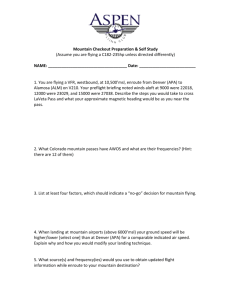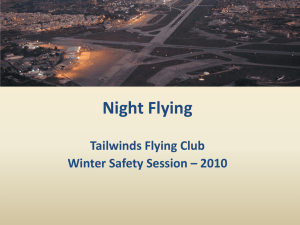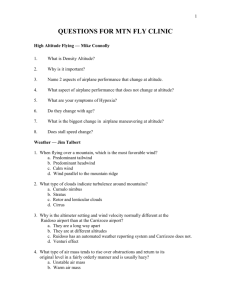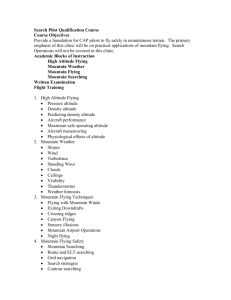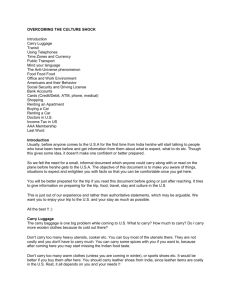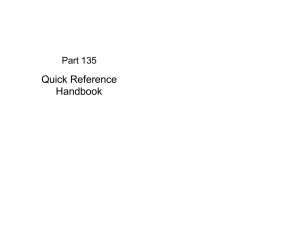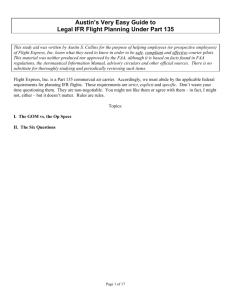MOUNTAIN-FLYING-FAMILIARIZATION-COURSE-for
advertisement
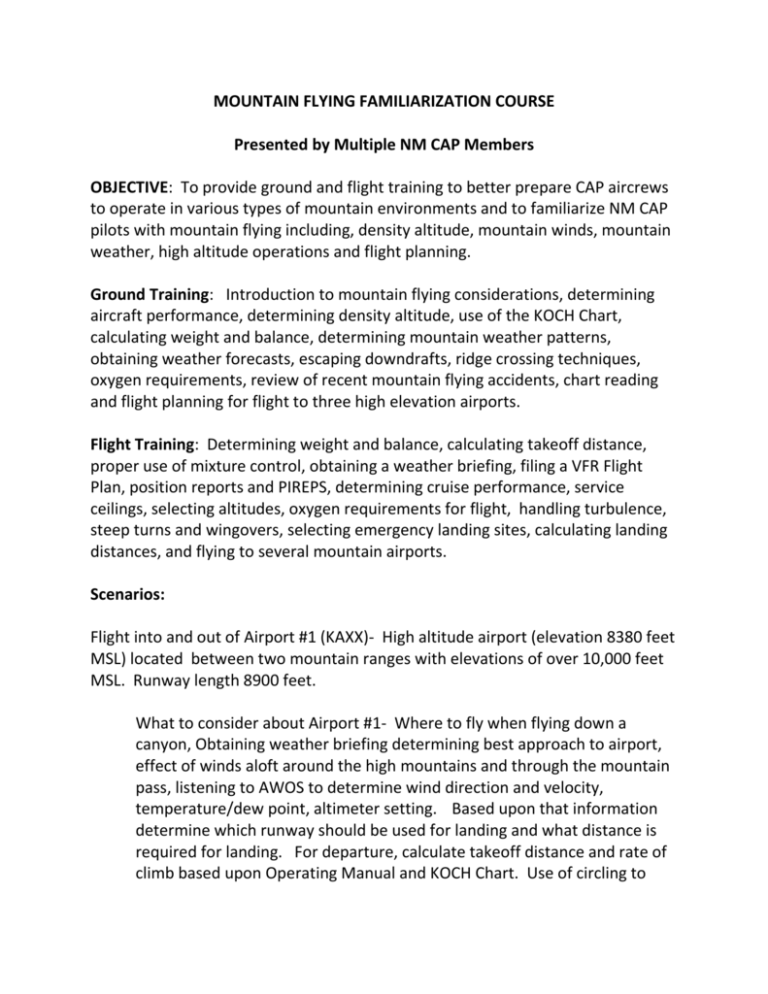
MOUNTAIN FLYING FAMILIARIZATION COURSE Presented by Multiple NM CAP Members OBJECTIVE: To provide ground and flight training to better prepare CAP aircrews to operate in various types of mountain environments and to familiarize NM CAP pilots with mountain flying including, density altitude, mountain winds, mountain weather, high altitude operations and flight planning. Ground Training: Introduction to mountain flying considerations, determining aircraft performance, determining density altitude, use of the KOCH Chart, calculating weight and balance, determining mountain weather patterns, obtaining weather forecasts, escaping downdrafts, ridge crossing techniques, oxygen requirements, review of recent mountain flying accidents, chart reading and flight planning for flight to three high elevation airports. Flight Training: Determining weight and balance, calculating takeoff distance, proper use of mixture control, obtaining a weather briefing, filing a VFR Flight Plan, position reports and PIREPS, determining cruise performance, service ceilings, selecting altitudes, oxygen requirements for flight, handling turbulence, steep turns and wingovers, selecting emergency landing sites, calculating landing distances, and flying to several mountain airports. Scenarios: Flight into and out of Airport #1 (KAXX)- High altitude airport (elevation 8380 feet MSL) located between two mountain ranges with elevations of over 10,000 feet MSL. Runway length 8900 feet. What to consider about Airport #1- Where to fly when flying down a canyon, Obtaining weather briefing determining best approach to airport, effect of winds aloft around the high mountains and through the mountain pass, listening to AWOS to determine wind direction and velocity, temperature/dew point, altimeter setting. Based upon that information determine which runway should be used for landing and what distance is required for landing. For departure, calculate takeoff distance and rate of climb based upon Operating Manual and KOCH Chart. Use of circling to gain altitude prior to going on course to next airport, overhead ascent, overhead descents. Question- Can you land safely under the current conditions and if you land, will you be able to takeoff and climb out to clear terrain? Flying into and out of Airport #2 (KLAM)- High altitude airport (elevation 7170 feet MSL) located on lee side of high mountain range with elevations over 10000 feet MSL. Runway length 5550 feet. What to consider about Airport #2- Safe way to cross ridges enroute from search area near Mt. Baldy, winds along lee side of the mountain range, listening to AWOS to determine wind direction and velocity, determine safe airspeeds to fly approach into this one way airport, as traffic must land using runway 27 and depart using runway 09. Calculate distance for landing and takeoff, calculate rate of climb using Operating Manual and KOCH Chart. Circling to gain altitude while departing airport. Position report to Flight Service. Question-With the rapidly rising terrain to the West, can you safely execute a go-around? What would be your plan? Discuss. Question- At what temperature and wind condition would takeoff and climb out be difficult with your aircraft? Discuss. Question-What are the effects on takeoff distance of the downslope of the departure runway? Discuss. Flight into and out of Airport #3 (E92)- High altitude airport (elevation 6100 feet msl with gravel runway) located in the flat lands with mountains nearby with elevations over 9000 feet msl. Runway length 4000 feet. What to consider about Airport #3- Winds aloft, winds at mountain tops (venturi effect), safe ridge crossings, where to look for updrafts and downdrafts, escaping downdrafts, handling turbulence, determining which runway should be used for landing and takeoffs based upon wind sock only, how to obtain an accurate altimeter setting. (No automated weather reporting at this airport) Use of pilotage and charts to locate airport (no navigation facilities-GPS not authorized). Calculate landing and takeoff distances for unimproved surface along with rate of climb using Operating Manual and KOCH Chart. Practice soft-field landing and takeoff techniques. Position report to Flight Service. Question- Under what conditions would you not land at this airport? Flight back to base airport- Use pilotage and chart only to navigate Back to base airport. Consider best way to cross ridges, best altitudes best location (where you can expect to get either updrafts of downdrafts). Use current weather information to calculate time and fuel requirements. Remember, at least a 1 hour reserve when you fly in the mountains.
